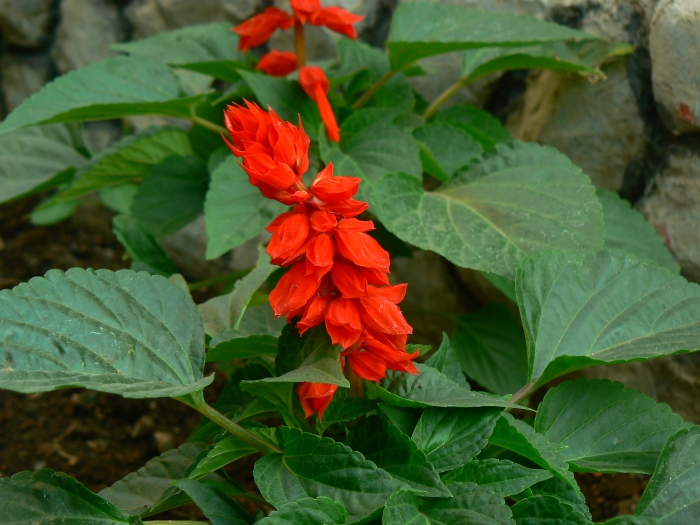Scarlet Sage
(Salvia splendens)
Scarlet Sage (Salvia splendens)
/
/

Dinesh Valke from Thane, India
CC BY-SA 2.0
Image By:
Dinesh Valke from Thane, India
Recorded By:
Copyright:
CC BY-SA 2.0
Copyright Notice:
Photo by: Dinesh Valke from Thane, India | License Type: CC BY-SA 2.0 | License URL: https://creativecommons.org/licenses/by-sa/2.0 | Uploader: Sreejithk2000 | Publisher: Wikimedia Commons | Title: Salvia_splendens_(357118788).jpg | Notes: User created page with UploadWizard |
















Estimated Native Range
Summary
Salvia splendens, commonly known as scarlet sage, is a tender herbaceous perennial native to the highland regions of Brazil. It thrives in areas with warm temperatures year-round and high humidity, typically at elevations between 2,000 to 3,000 meters (6,600 to 9,800 feet). In its natural habitat, scarlet sage is found in open areas where it can receive ample sunlight. The wild form, which is less commonly seen in cultivation, can reach up to 1.3 meters (4.3 feet) in height. Scarlet sage is characterized by its vibrant and showy flowers, which come in a spectrum of colors including blue, orange, pink, purple, red, and white, and it can bloom throughout the year given the right conditions.
Scarlet sage is highly valued for its continuous flowering habit and the bright splash of color it provides, making it a favorite for bedding in public gardens, shopping malls, and urban landscapes. It is also used in borders and containers for its ornamental appeal. While it can tolerate a range of light conditions from full sun to part shade, it prefers a balance of exposure for optimal blooming. Scarlet sage requires medium amounts of water and well-drained soil to thrive. It is relatively easy to maintain, but it can be susceptible to fungal diseases in overly moist conditions. In regions with cooler climates, it is often grown as an annual since it does not tolerate frost.CC BY-SA 4.0
Scarlet sage is highly valued for its continuous flowering habit and the bright splash of color it provides, making it a favorite for bedding in public gardens, shopping malls, and urban landscapes. It is also used in borders and containers for its ornamental appeal. While it can tolerate a range of light conditions from full sun to part shade, it prefers a balance of exposure for optimal blooming. Scarlet sage requires medium amounts of water and well-drained soil to thrive. It is relatively easy to maintain, but it can be susceptible to fungal diseases in overly moist conditions. In regions with cooler climates, it is often grown as an annual since it does not tolerate frost.CC BY-SA 4.0
Plant Description
- Plant Type: Subshrub, Herb
- Height: 1-2 feet
- Width: 0.8-1.5 feet
- Growth Rate: Rapid
- Flower Color: Red
- Flowering Season: Summer, Fall
- Leaf Retention: Deciduous, Semi-deciduous
Growth Requirements
- Sun: Full Sun, Part Shade
- Water: Medium
- Drainage: Medium
Common Uses
Bee Garden, Bird Garden, Border Plant, Butterfly Garden, Deer Resistant, Drought Tolerant, Fragrant, Hummingbird Garden, Low Maintenance, Potted Plant, Rabbit Resistant, Salt Tolerant, Showy Flowers, Street Planting
Natural Habitat
Native to the highland regions of Brazil with warm temperatures year-round and high humidity
Other Names
Common Names: Pracht-Salbei, Sauge Écarlate, Sauge Éclatante, Yi Chuan Hong, Kkaekkot
Scientific Names: , Salvia splendens, Salvia brasiliensis, Fenixanthes splendens, Horminum splendens, Jungia splendens, Salvia colorans, Salvia colorans publ, Salvia hoveyi, Salvia issanchou,
GBIF Accepted Name: Salvia splendens Sellow ex Nees